{This is a collaboration post. I have been reimbursed in no way in monetary terms (except for the product sample) for this post. The views and opinions expressed here are my own}
January is half gone and I have yet to share a post here. This one was meant to be shared before January 14th for the Makar Sankranti, an auspicious day of the Hindu calendar. But I had reasons that kept me busy. The year began with my parent-in-laws visiting me and then I had a covid scare which turned out to be a nasty seasonal flu that drained me of my energy and also my mojo to cook. However, I had promised two collab posts with Conscious Foods so here I am, to deliver the first one.
For all my posts, I always provide the indigenous name of the dish in English, followed by Hindi and then, in brackets, I try and give an equivalent or at least an idea about the dish in English. However, when I got to writing the title for this post, I was at loss for words that could sum up, what this dish really is. A winter super-food is all I could think of, as that’s what it exactly is! It is very nutritious and healthy and it is consumed specifically during winters. And it especially given to women as a part of their postpartum diet for healing and lactation. And it seemed like the perfectly healthy kick start to the year 2022.
Besides, when Conscious Food, a reputed and certified organic brand, asked me to collaborate with them and prepare two healthy posts for them, one savoury and one sweet, my first choice for the sweet one was hands-down the Panjiri. (The savoury post which will follow this one very soon) It is seasonal, healthy and perfect winter food.
Since the 1990s, Conscious Food has been providing a curated range of organic and natural cereals, ancient grains, pulses, flours grains, natural sugars and power packed snacks, seeds and nuts besides cold pressed oils to complement the wellness life style. Conscious Food is recognized by ECOCERT (an international inspection and certification body for organic, fair trade and good agricultural practices) as an officially certified trading house. The company strongly believes in maintaining an ethical supply chain and sources responsibly-grown produce besides promoting indigenous varieties and following sustainable practices, wherever possible. Conscious Food is available all over India at premium supermarkets, specialty food outlets, gourmet food stores, and all major online retailers. Also check out their blog page where they have provided very handy info and insightful articles on various foods and ingredients and enjoy some delicious recipes too.
Before I proceed to the recipe let me share with you my product experience vis-à-vis the products that I had received for creating this post.
The company seems to have given a lot of attention and value to the quality they offer to their consumers. All their products were of high quality, from the nuts to seeds to the flour. (You can scan the products that I had received in the picture below)
The strong packaging ensures freshness for longer time and also prevents damage to the product.
I really liked their assorted unsalted mixed seeds. You can toast them and enjoy them on their own or add a healthy dose to your cereal or toast.
In comparison to the other organic brand products, that I have used earlier, I found their raw sugar to be the best so far. (I won’t speak of the names of the other brands though) It left no grit or residue upon dissolving in water which other organic brands did.
I was gobsmacked by the quality of their ghee! It was as good as my home made one on all accounts…aroma, texture (दानेदार – danedar / granular) and taste. I have been using A2 milk since four years now and I always make my own A2 ghee. I have used organic store brought A2 ghee only a couple of times when I ran out of my home made stock but the store brought one could not match the home made quality. However, if I was given a blind taste test or aroma test for Conscious Food ghee, I would have failed to tell which one was home made and which was theirs. That good! Highly recommend buying their ghee if you are keen on a good quality ghar jaisa A2 ghee / desi ghee.
Panjiri primarily constitutes of flour/s that is enriched with nuts, fox nuts, seeds and raisins – all roasted in ghee, crushed and then mixed with raw sugar (desi khaand/ tagar) or jaggery. One can add spices such as cardamom powder, fennel seeds and dry ginger powder for taste and also for their health benefits. There are several variations of panjiri and also, each family has its own heirloom recipe. Panjiri is consumed as a snack and for breakfast with warm or hot milk. The quantity consumed is little since it is very rich; no more than one fourth cup for adults (consider dietary restrictions). Kids are given even less. I am providing the amount of ingredients for making a small batch so you can make a fresh batch each time however you can easily double the recipe.
½ C Makhana (Lotus Seeds)
1 tbsp Flaxseeds
1½ tbsp Sesame Seeds
2 tbsp Mixed Seeds
5 tbsp Desi Ghee
2 tbsp Edible Gum (Gond)
2 tbsp Cashew nuts
2 tbsp Almonds
2 tbsp Pistachio
2 tbsp Raisins
1 C / 120 gm Whole wheat Flour (Wholemeal)
1 tsp Dry Ginger Powder
½ – 1 tsp Cardamom Powder, adjust amount to taste
¾ tsp Saunf (Fennel Seeds), adjust to taste
½ C Raw Sugar
Before we begin to roast the ingredients, measure and gather all your ingredients in a plate / bowl. Also keep a mixing bowl ready.
We need to roast each and every ingredient separately (some in ghee and others not) and decant them to cool either on plate or bowl. If decanting them on a plate, place them in separate / individual piles so it is easy to manage the work later i.e. coarsely grinding each one.
Take a frying pan or a kadahi and place it on medium heat. Once it is hot, reduce the heat to medium low or low and dry roast the makhana, stirring frequently, till they are toasty/ crunchy and get easily crushed by hands. Remove on the plate and allow to cool.
In the same pan, dry roast the flaxseeds on low heat, stirring constantly. The flaxseeds will begin to pop, keep stirring and roasting for ten to fifteen seconds and then remove the pan from heat. Keep stirring till the flaxseed are popping. Once the popping stops, remove them on the plate and allow to cool.
Place the pan back on low heat and now add the sesame seeds and dry roast them in the same way as we did with the flaxseeds. Once done, remove on the plate and allow to cool.
Lightly toast the mixed seeds also.
Using a mortar and pestle, coarsely grind or simply crush the makhana to attain small pieces. Transfer it to the mixing bowl. Next grind the flaxseeds to a coarse powder and transfer to the mixing bowl. Coarsely grind the sesame seeds as well and transfer it to the mixing bowl as well.
Grind half the amount of mixed nuts and leave the rest as such and transfer them to the mixing bowl.
Next, add a tablespoon of ghee to the frying pan and roast the edible gum. Keep tossing it around in the ghee to ensure even cooking and also to help each and every piece of the gum to puff up and not remain chewy. Once done, remove on an absorbent sheet. Set aside to cool. Once cool, crush the edible gum using mortar and pestle and transfer it to the mixing bowl.
Add a teaspoon more of ghee and fry the almonds till they turn aromatic and crackle. Remove them on an absorbent sheet. Allow to cool. Next, fry the cashews till they turn golden brown and remove them too on the absorbent sheet. Lastly, fry the pistachios till they are nicely toasted and golden in colour. (You need to keep stirring the nuts while frying them to prevent them from burning and also for even cooking.) Add more ghee while toasting, if required.
Once cool, grind the nuts to the desired consistency and transfer them to the mixing bowl.
Add a teaspoon of ghee (only if required) to the frying pan and fry the raisins and once they are plump, remove them from the pan and transfer them to the mixing bowl.
Wipe the frying pan if there is any residue and dry roast the whole wheat flour on low heat for approximately five to seven minutes or till it begins to turn aromatic.
Add the remaining ghee and keep roasting the flour on low heat till it attains deeper colour and is no longer raw and becomes highly aromatic. It is essential to constantly keep stirring the flour so that it does not burn.
Once it is done, remove the frying pan from the heat and stir in the dry ginger powder. Keep stirring the flour for a few minutes since it will keep cooking in the residue heat. Remove the flour in the separate bowl and allow it to cool completely. It is important to cool down the roasted flour before adding the other ingredients and sugar to it.
Once cool, add flour to the rest of the ingredients along with fennel seeds, sugar and cardamom powder. Mix everything well using clean hands or spatula and store in a clean / sterilised air tight jar. Take a clean dry spoon for serving the panjiri.
Yield – 2½ C (350 gm) approximately
Note –It is important to roast the flour on low heat. The flour needs to be thoroughly cooked else it will taste raw and pasty. It takes long to roast the flour till it attains a deeper shade and aroma so stay patient while roasting it.
Note – You can grind the ingredients to the desired consistency i.e. fine or coarse depending on whether you like your Panjiri to have texture or you like it smooth. However if you need to give it to kids, a finer consistency is desirable.
Note – If you are serving the panjiri in summers, do not use edible gum since it has warm properties and generates heat in the body.
Note – The amount of ghee will vary since lesser amount A2 ghee suffices in most cases in comparison to the regular one. So you may have to increase the amount to half a cup in case your ghee is not A2.
Note – Do not skimp on ghee else the panjiri will be dry; unless you prefer that texture.
Note – I also lightly toasted the fennel seeds to add a depth in flavour. It is optional but I recommend it.
Note – Adjust the amount of aromatics to suit your taste. Also, you can increase or decrease the amount of nuts and seeds to suit your taste.
You can follow and check details about the company and their product range on their Website, Instagram, Facebook accounts
Thank you for your visit and see you soon again with another exciting recipe!

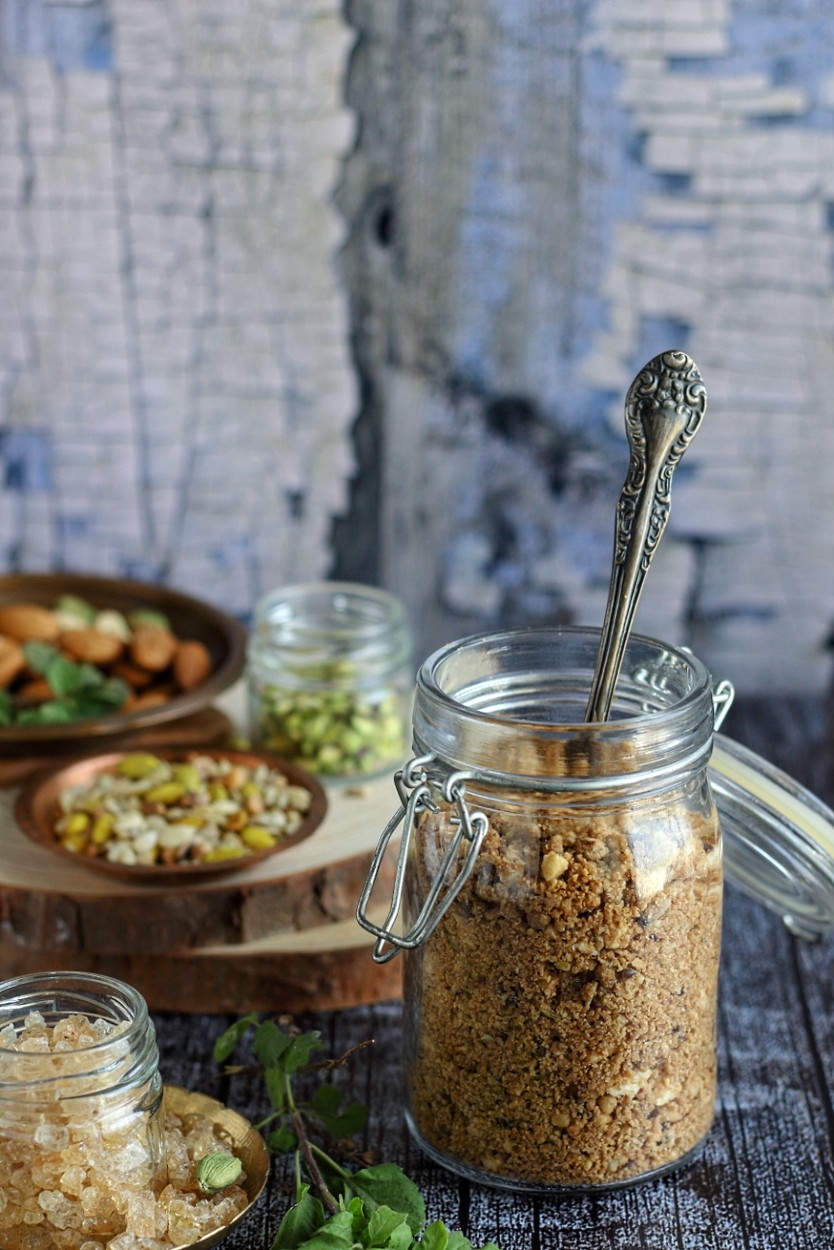
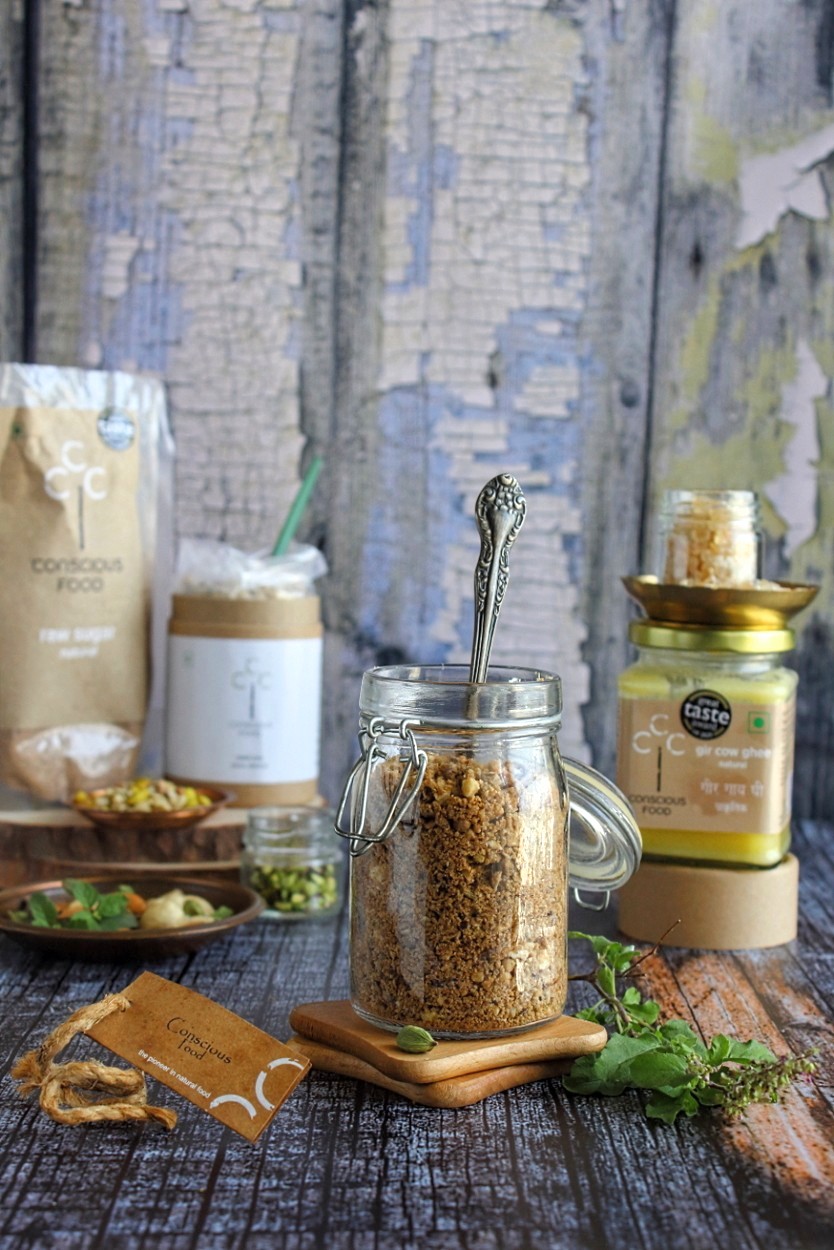
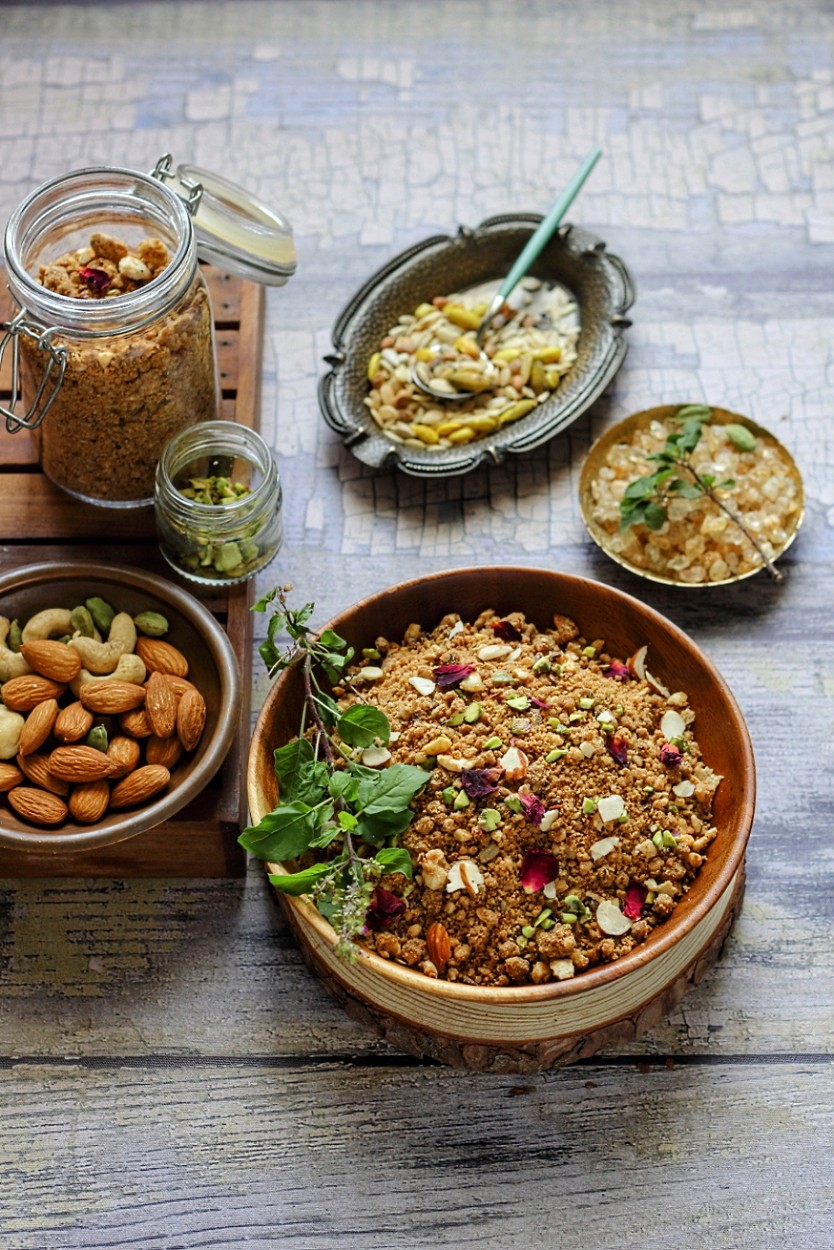
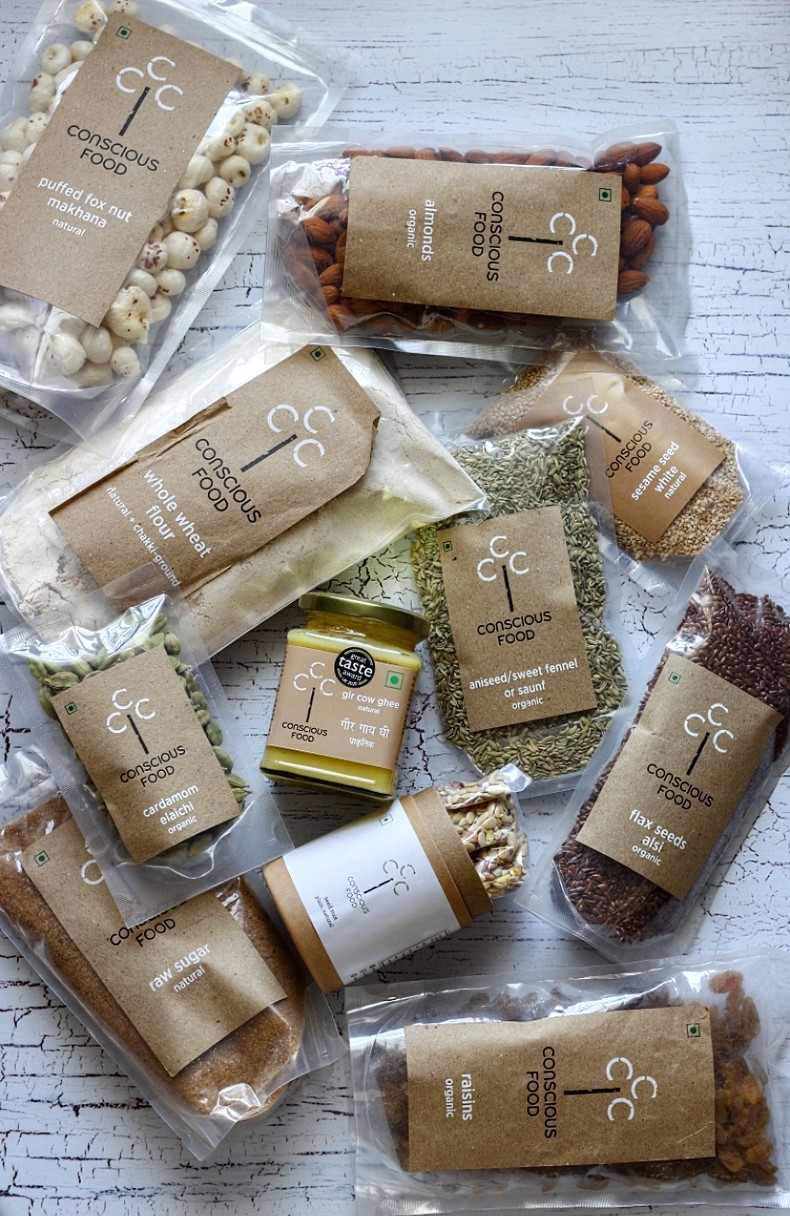
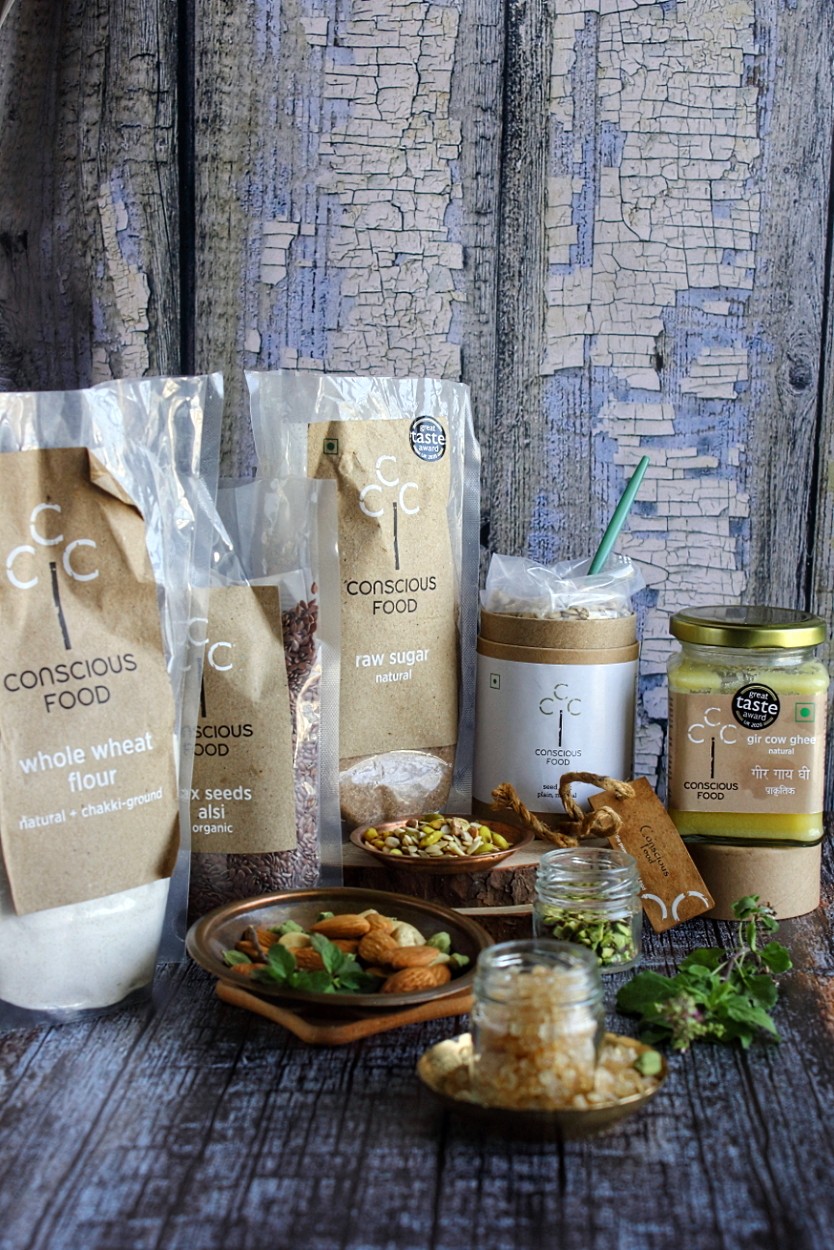
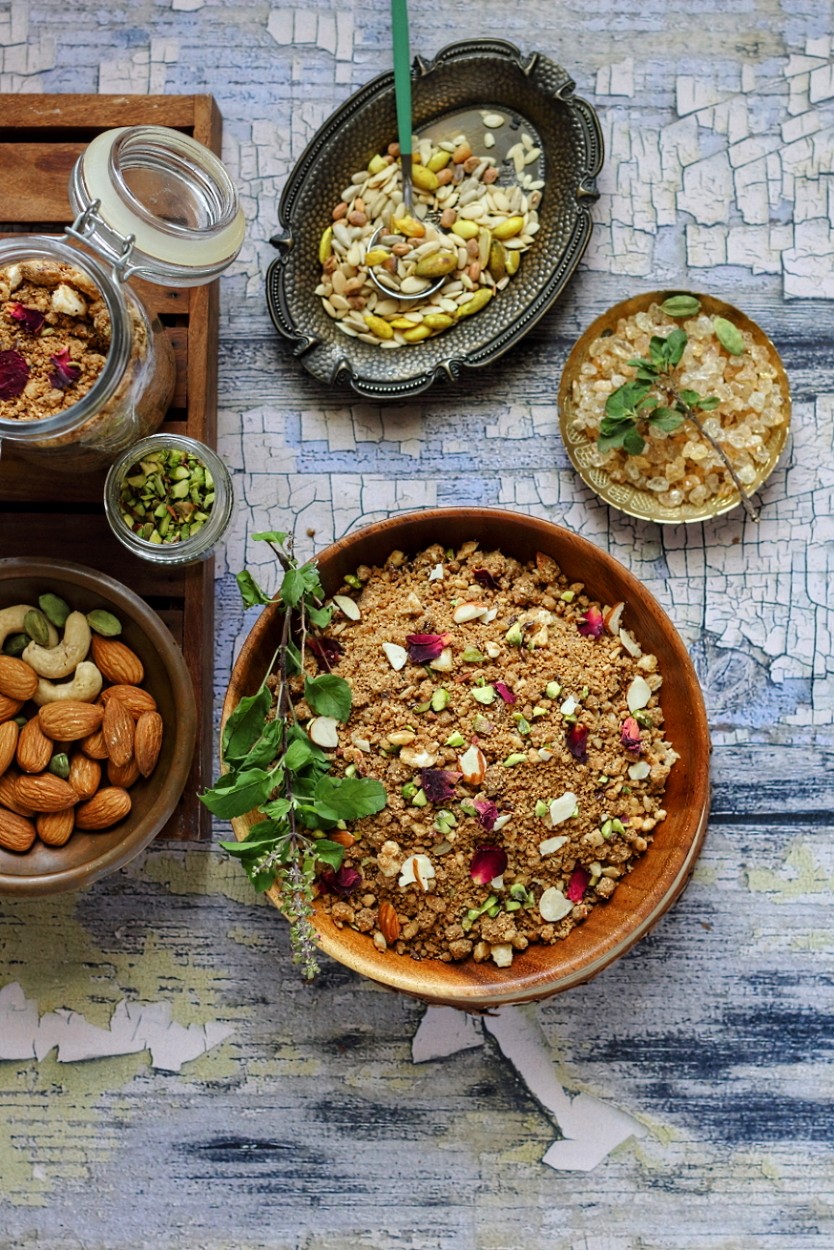
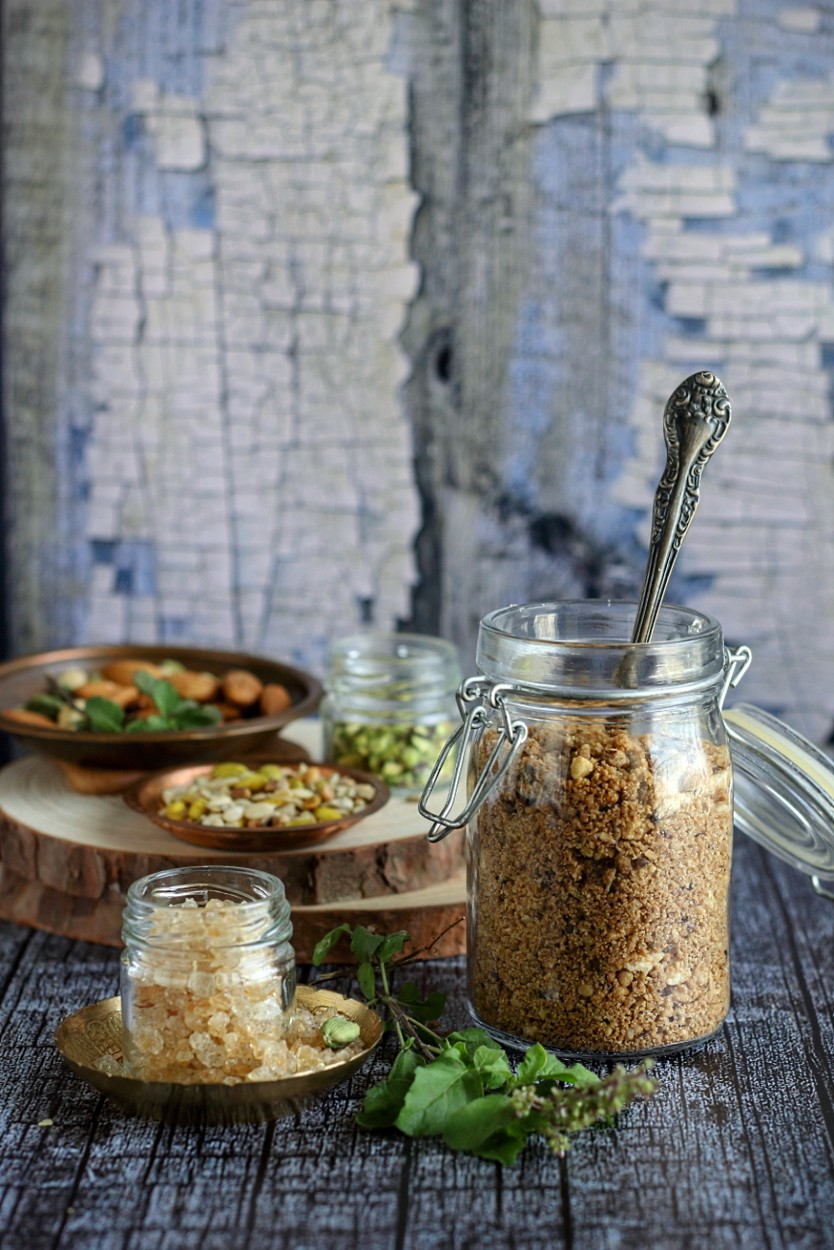
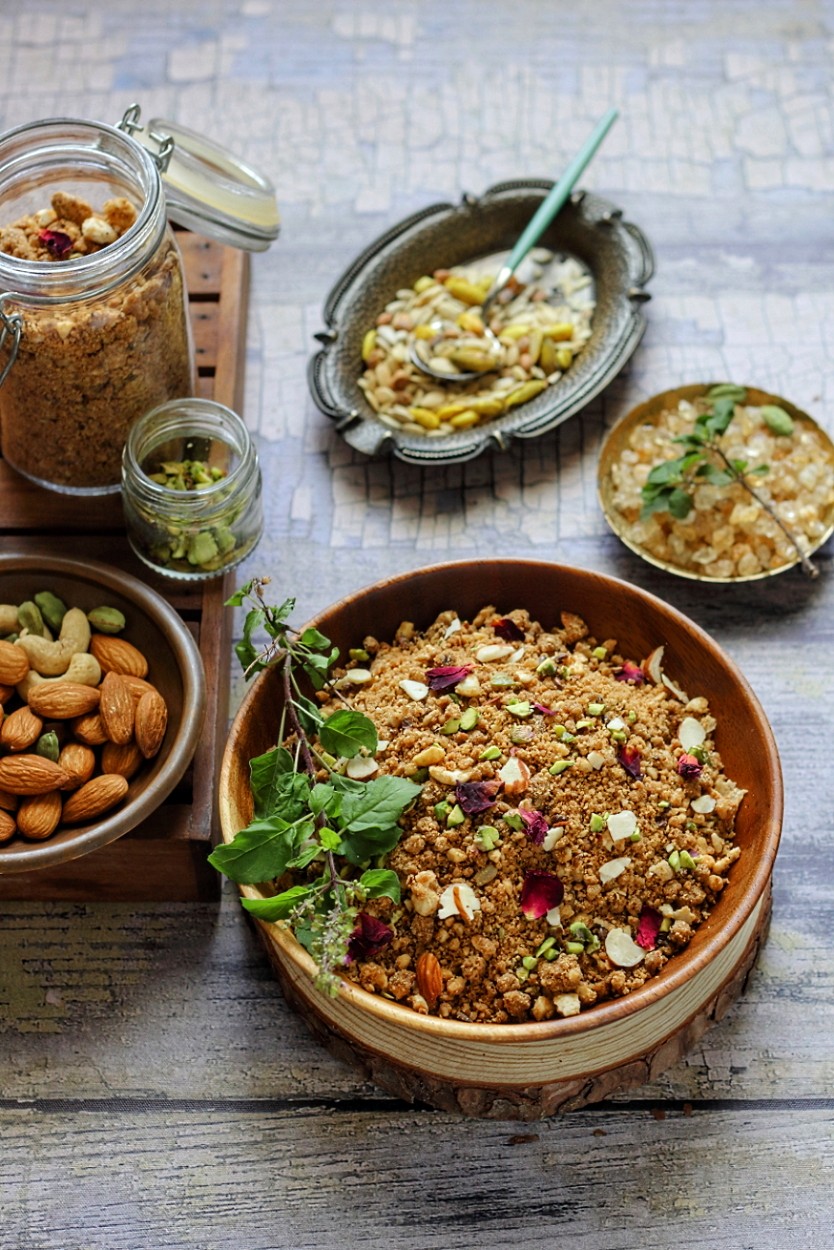
I love all things nutty and seedy…this looks so yummy!
This looks terrific — so many nice flavors. And great texture. Thanks!
Thank you John.
Also, want to run this past you that for the past several times, whenever I have tried to access your blog homepage, I always receive this prompt which tells me to check for typo error and the page never opens.
I completely believe in eating whole, organic grains and such. And it’s not really because I’m some kind of scientist, or even because I trust scientists (although I do). It’s mainly because the proecessing of food isn’t done in order to make it better for us. It’s done in order to make it easier and more profitable to sell. What kind of criteria is that to make decisions about what you put into your body?
Drooling!! Parcel some plisss 😉
Ah! How I wish I could!